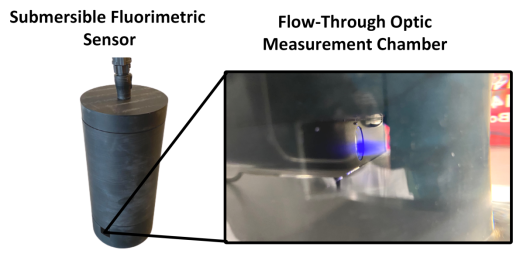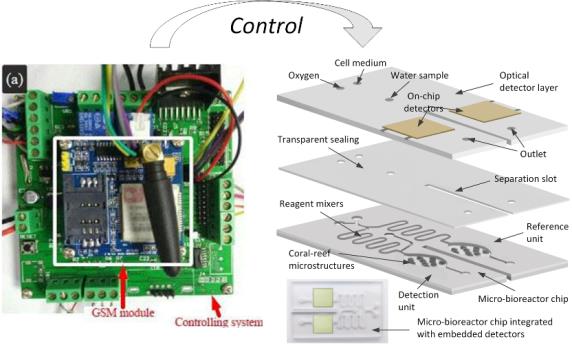Sensor for pre-screening of water microbial contamination
Water distribution systems are critical infrastructure and a possible route of exposure to a large number of people. According to WHO (World Health Organization), in 2017, 5.3 billion people had access to safe drinking water services 1. Despite this claim, drinking water distribution networks are generally poorly monitored, leading to occasional contamination outbreaks. In the possible contaminants spectrum, microbial organisms are especially challenging to detect, due to the lack of sensitivity from the traditional sensors (pH, Turbidity, DOM, etc). Just in Norway, two big outbreaks of gastrointestinal infections caused by drinking water were also registered since 2000, the Giardia outbreak in Bergen in 2004 that caused 6000 infections, and the Campolybacter outbreak in Røros in 2007 that caused 1500 cases of illness. Additionally, another 28 “small” outbreaks events have occurred between 2003-2012 with a registered total of 8060 infections. 2
Sensovann AS in projects´ cooperation with Aqua Alarm AS and USN (University South-Eastern Norway) has developed a new online fluorometer sensor, which is capable of pre-screening water microbial contamination. The sensor´s prototype, finalized and delivered by Sensovann, measures intrinsic fluorescence of water organic particles (including bacteria) at a specific UV wavelength. In-situ verifications showed that the sensor output has a high correlation with water bacterial content. Our verifications also showed that the sensor has a good correlation with HPC (heterophobic plate count), suggesting that the fluorimeter has great promise as an automatic low-cost and compact solution for early warning of water microbial contamination.

In addition, the company has also built sensors for measuring toxicity from stressors in human-consuming water with a technology based on living microorganisms. The core technology is realized on biological microchips where luminescent organisms are accommodated and reacted by emitting different intensities of luminescence/fluorescence in the presence of the stressors. Electronic control were made to automatize the system and give precise measurements. Succesfully demonstrated the concept for known metal ion stressors.

References:
(1) Drinking-water https://www.who.int/en/news-room/fact-sheets/detail/drinking-water (accessed Apr 6, 2020).
(2) Drinking water in Norway - NIPH https://www.fhi.no/en/op/hin/infectious-diseases/drinking-water-in-Norway/#waterworks-in-norway-status-and-trends (accessed Oct 6, 2018).

